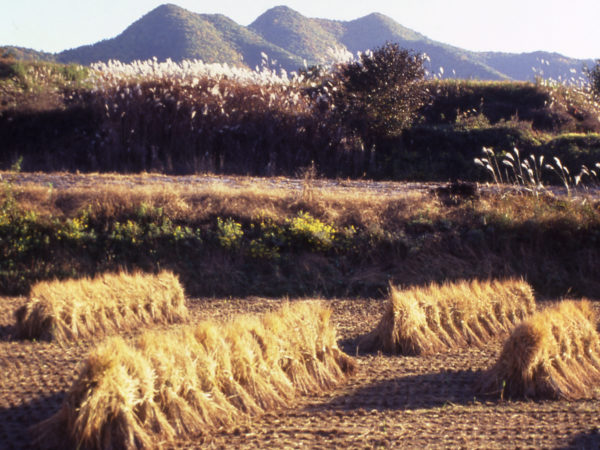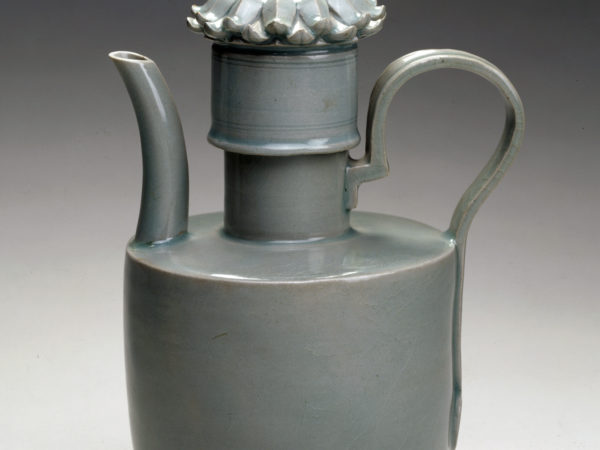Background Information
Importance of Land and Mountains in Korean Culture
This image shows mountains and harvested rice in the autumn near the village of Andong in South Korea. Andong has been preserved as a traditional village, and exhibits both upper- and lower-class houses from the Joseon dynasty (1392–1910). The Korean peninsula is filled with mountains. Mountains form natural barriers and also create distinctive regions within Korea. Rice is a staple crop in Korea. Land formed the basis of wealth for most of Korean history. Rice was harvested not only for food, but also to pay for taxes.




